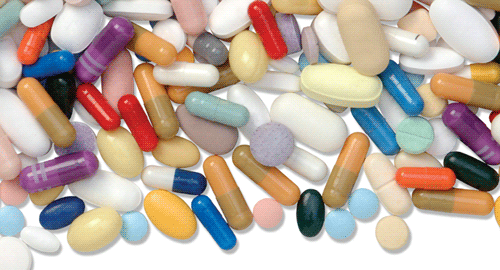 A recent Phase 3 clinical trial found that an increased number of interleukin (IL)-17A-producing cells are present in the peripheral blood, synovial tissue and fluid, and skin plaques of patients with psoriatic arthritis (PsA).1 The IL-17A cytokine increases joint inflammation and damage by triggering activation and movement of immune cells (e.g., proinflammatory cytokines, chemokines)—thus, acting as a chemo-attractant to neutrophils and monocytes and stimulating release of matrix metalloproteases and receptor activator of nuclear factor kappa-B ligand—helping destroy cartilage and bone. Therefore, inhibiting IL-17A-producing cells helps treat PsA.
A recent Phase 3 clinical trial found that an increased number of interleukin (IL)-17A-producing cells are present in the peripheral blood, synovial tissue and fluid, and skin plaques of patients with psoriatic arthritis (PsA).1 The IL-17A cytokine increases joint inflammation and damage by triggering activation and movement of immune cells (e.g., proinflammatory cytokines, chemokines)—thus, acting as a chemo-attractant to neutrophils and monocytes and stimulating release of matrix metalloproteases and receptor activator of nuclear factor kappa-B ligand—helping destroy cartilage and bone. Therefore, inhibiting IL-17A-producing cells helps treat PsA.
The study assessed the safety and efficacy of ixekizumab, an anti-IL-17A monoclonal antibody. This randomized, 24-week, double-blind, placebo- and active-controlled trial was conducted in patients with active PsA. It compared two ixekizumab regimens and an active reference arm of adalimumab with placebo. Biologic-naive PsA patients were randomized to receive subcutaneous injections of one of the following: 40 mg adalimumab once every two weeks (n=101), 80 mg ixekizumab once every two weeks (n=103), 80 mg ixekizumab once every four weeks (n=107) or placebo (n=106). Patients were allowed to remain on stable doses of conventional disease-modifying antirheumatic drugs (DMARDs), oral corticosteroids, opiates and/or non-steroidal anti-inflammatory drugs/cyclo-oxygenase-2 inhibitors. The ixekizumab treatment regimens included a 160 mg initial dose.
The primary study objective was to assess the superiority of the ixekizumab regimens compared with placebo using the American College of Rheumatology 20 (ACR20) response at Week 24. Secondary endpoints included the proportion of patients achieving ACR50 or ACR70 responses; the proportion of patients achieving a 75%, 90% or 100% improvement of the Psoriasis Area and Severity Index score (PASI 75, PASI 90 and PASI 100); the percentage of psoriasis-affected body surface area; and the change from baseline in the Health Assessment Questionnaire-Disability Index.
Significantly more ixekizumab-treated patients achieved an ACR20 response compared with placebo-treated patients (every two weeks, 62%; every four weeks, 58%; placebo, 30%). Compared with placebo-treated patients, both groups of ixekizumab-treated patients had significantly improved disease activity and functional ability at Weeks 12 and 24, as well as significantly less structural damage progression at Week 24 (P≤0.01). Also, plaque psoriasis clearance was greater in ixekizumab-treated patients compared with placebo-treated patients (P≤0.001). Adalimumab-treated patients showed significant improvements compared with placebo-treated patients.
PASI 100 was reached at Week 24 in 43% of patients treated with ixekizumab every four weeks, 53% of those treated with ixekizumab every two weeks and 24% of those in the adalimumab-treated group. More ixekizumab-treated patients and adalimumab-treated patients compared with placebo-treated patients had treatment emergent adverse events (66%, 64%, 47%, respectively; P<0.05). Most reactions were mild or moderate and included injection-site reactions, injection-site erythema and nasopharyngitis.


